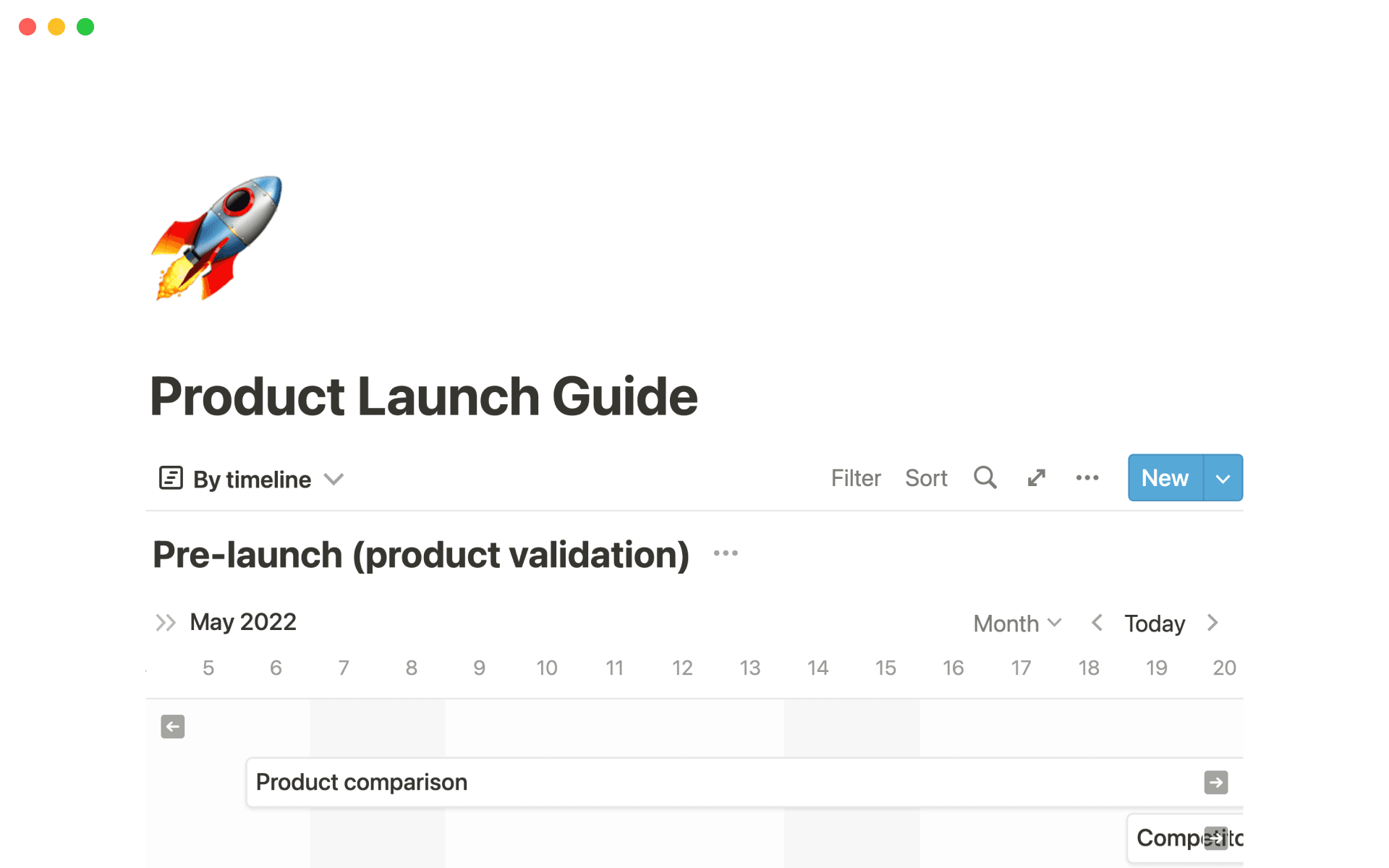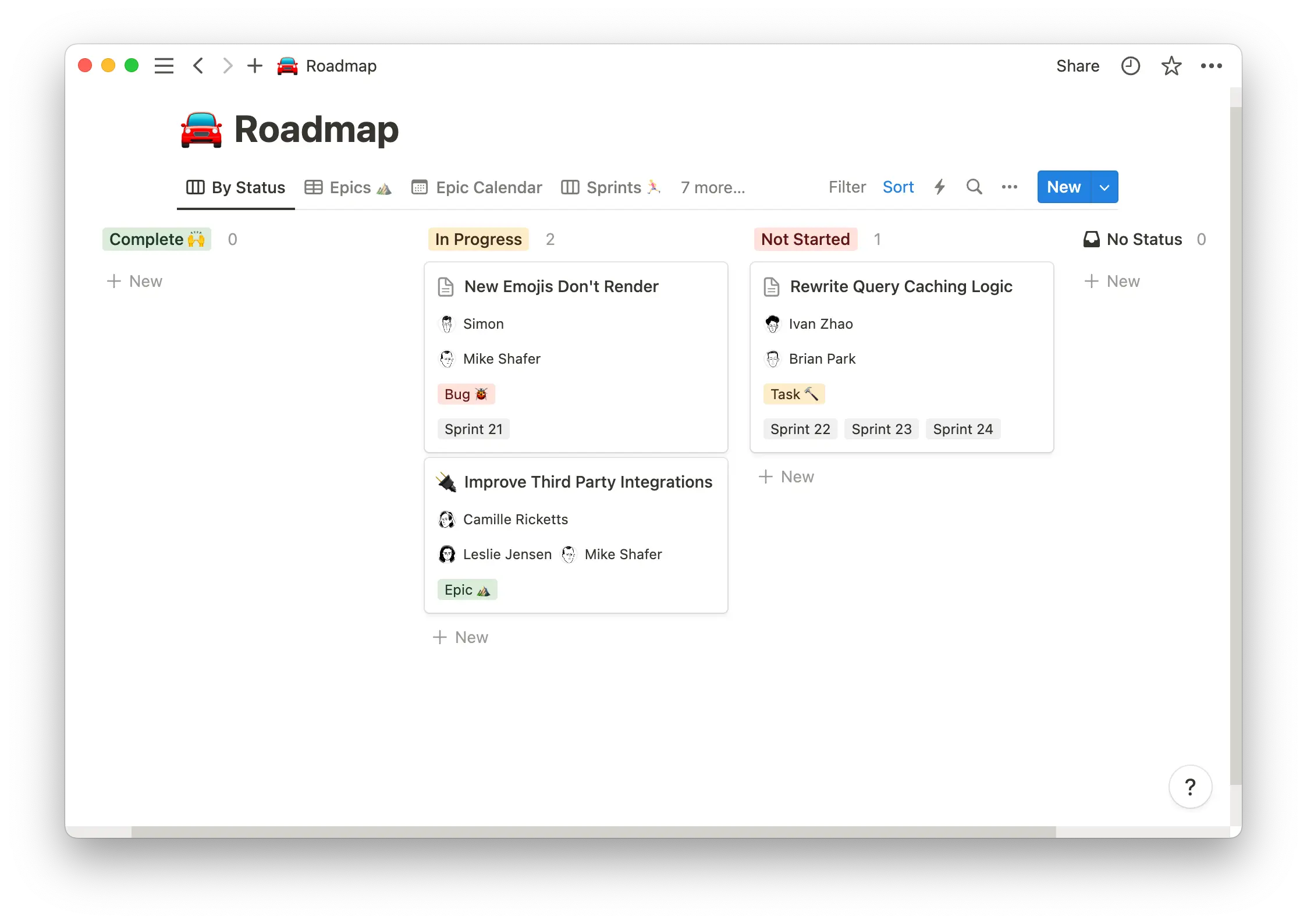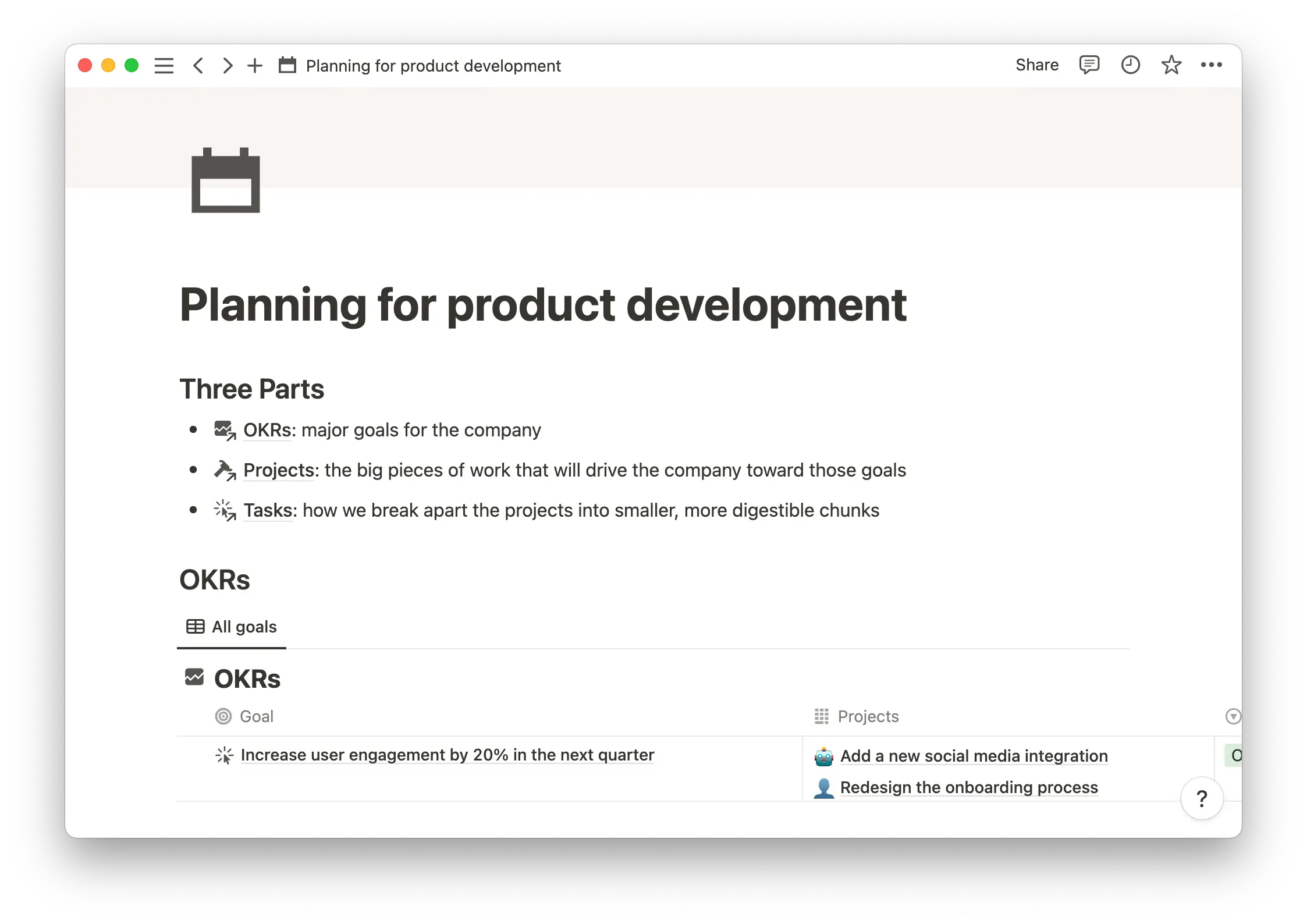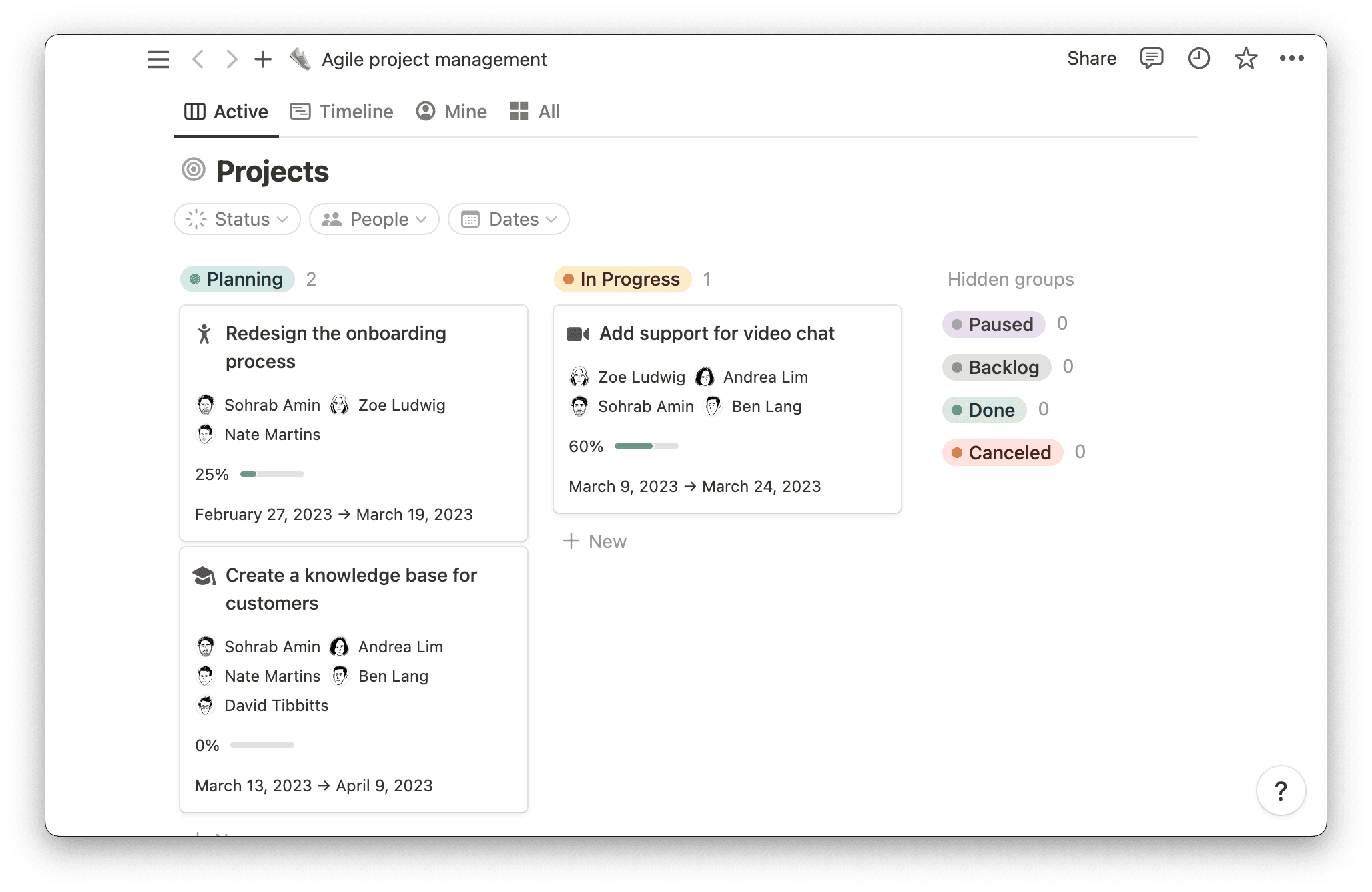Venturing into product development without a roadmap is a surefire way to derail progress.
A product roadmap serves as an indispensable guide throughout product development, steering your team through the intricate process of bringing something new to life. It fosters collaboration across departments and ensures workers and stakeholders are in sync every step of the way.
By adopting a strategic approach to product development, devising strategies to overcome obstacles, and prioritizing market needs, your organization can elevate its products to new heights. Let’s explore how to create a product roadmap and set your next initiative on the path to success.
What’s a product roadmap?
A product roadmap is a strategic plan that illustrates the vision, goals, and direction of a product development project over a specific period of time. The visual serves as a high-level communication tool and aligns the product team, other contributors, and relevant stakeholders on the planned features, upgrades, and milestones for the product's future.
Your product roadmap serves as a single source of truth (SSOT), a term that often crops up in the tech world. As the name implies, an SSOT consolidates all relevant data on a particular project in one document, fostering transparency, collaboration, and open communication both within and outside the organization.
Unlike traditional maps, product roadmaps must be flexible. End-user feedback, unexpected obstacles, and market shifts impact the product plan, so it’s crucial the team is ready to make edits to the roadmap as necessary to keep the product aimed at the company’s goals no matter what bumps are encountered along the way.
It's important to note that while product roadmaps should be comprehensive and robust, they still only provide a 30,000-foot view of the work ahead. They’re not intended to function as sprint or task-driven plans that guide teams through specific project phases or iterations.
Why are product roadmaps essential?
Regardless of your team's preferred project management style, you need a map. Here's why even projects that may not follow a direct sequential course can benefit from this high-level product view. Product roadmaps:
Foster information sharing — as the SSOT for the project, a product roadmap consolidates all the pertinent information about the product strategy in a central location that all team members can access and review, ensuring everyone is on the same page.
Inspire trust — the product roadmap provides stakeholders with a coherent and compelling plan they can believe in. It serves as evidence of a promising product idea and outlines a feasible path for its development.
Simplify communication — not everyone needs to delve into the intricacies of the product’s development tasks or marketing strategies. A product roadmap offers a comprehensive project view that anyone involved in the initiative can understand, regardless of their area of specialty.
Encourage open conversations — the shared nature of a roadmap invites all stakeholders to review and contribute to it. These conversations will help shape the project, optimize workflow, and proactively identify and mitigate risks before they escalate into issues.
Types of product development roadmaps
Project tasks generally take one of two forms: sequential or iterative.
The Waterfall project management model is a traditional sequential model in which a team completes one phase before beginning the next. Agile, and similar processes like Scrum, rely on iterative cycles in which teams completely develop and test product features and may work on several at once.
Product development roadmaps follow either Waterfall or Agile-style courses. Let’s explore what a product roadmap looks like in each.
Waterfall product roadmap
Waterfall product roadmaps display project phases sequentially. Deadlines distinguish each stage of the project, and the map reflects the fact that the team must complete one block of work before taking on the subsequent group of tasks.
Here’s a simple example: Picture a team building a physical product, like a stereo. Before assembling it, the group must receive all the parts and materials to create the item. The project manager could create a product roadmap showing the receipt of materials as a step that precedes assembly.
Agile product roadmap
An Agile product roadmap may contain some sequential project phases for pieces of work that depend on the completion of previous tasks, but Agile roadmaps are generally iterative. This means the roadmap doesn’t show firm deadlines but focuses on completing bite-sized goals, allowing teams to redistribute resources and time when they hit a roadblock. Popular with IT teams, Agile product timelines can absorb the shock of needing to rework things when a feature fails.
How to build a product roadmap
Gather your stakeholders — it’s time to put pen to paper (or fingers to keyboard). Create a plan for a successful project using the following steps.
1. Determine the product vision
A project vision touches every aspect of product creation. The vision is the “why” behind the work — the reason your team must make this product to alleviate a consumer pain point.
In this step, identify the value your product brings to the end user, market, and company. Define how the item, service, or software differs from competitors and uniquely benefits the consumer.
2. Decide on crucial product themes
Start with the highest-level brainstorming by determining project themes. These themes serve as broad work categories and the foundation for defining specific goals and action items later on. Project themes may include customer retention, creating greater value for the consumer, and improving convenience for the end user.
3. Set project goals
Goals translate product themes into strategic objectives. Use the SMART methodology to determine goals your team can realistically complete within the project's duration that are:
Specific
Measurable
Achievable
Relevant
Time-bound
All goals should connect back to the “why” of the project.
4. Define critical product features
When working with high-level visions, themes, and goals, it’s easy to fall into the trap of taking on too much work. Protect yourself from developing an overly ambitious product or a wealth of new features by sticking to only what you can realistically create in the project’s timeframe. You can prioritize features by circling back to your “why.” Which attributes best serve the overall goal of the product?
5. Map project phases
It’s time to choose a product roadmap tool to map project phases. If you prefer Waterfall projects, consider a Gantt chart, which plots work against time. And if you prefer the Agile methodology, use a template specific to this project management model that lets you track multiple sprints across different departments.
Ultimately, templates and tools are only a jumping-off point. You can shape almost any template to your needs by dividing up tasks into categories or themes and adding date ranges that fit your project’s rhythms.
6. Readjust as needed
Your product roadmap will likely change after you begin the actual work. You may need to shift phase deadlines or reorder dependent action items in order to adapt to changing needs, internal roadblocks, and external hindrances.
Roadmap planning best practices
When creating your first roadmap, having a solid understanding of how to construct one is a great starting point — and following best practices can help you create an excellent map on the first try. Here are a few valuable tips to consider:
Regularly review the roadmap — schedule weekly meetings with stakeholders to briefly review the roadmap and make necessary adjustments. Catching delays or interdependent task issues early will save your team the stress of a chain of incomplete work later on.
Collaborate to create the map — involve team members from various specialty areas in the process of creating the roadmap. Each participant brings unique insights and expertise to the table, no matter their niche. For instance, a marketing employee may possess a keen understanding of consumer needs that sparks an idea in a developer’s mind.
Know when to let go — as work progresses, be prepared to reprioritize tasks that become less essential than you’d once thought. If you realize that a particular feature no longer aligns with evolving end-user needs, let that task go and redirect resources toward more valuable areas.
Make better roadmaps with Notion
Creating a new product from scratch is an intensive process. Take some of the extra work off your plate with Notion.
Our platform can help your team navigate the product roadmapping process from the point of departure to the destination. Tap into Notion’s roadmap template, project tracker, and product wiki to create your best product yet.







